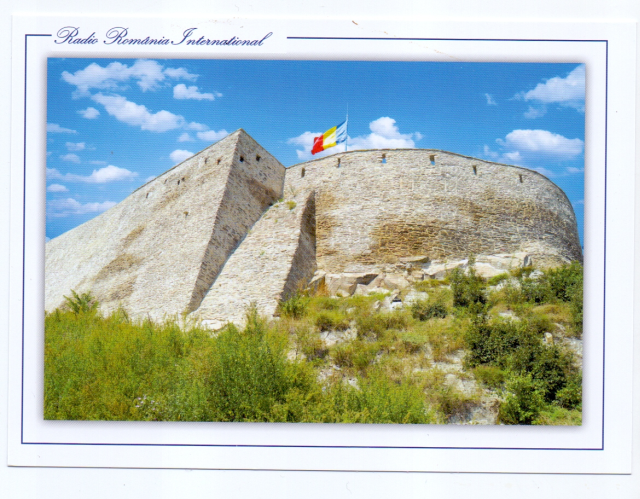Hunedoara County
Deva Fortress is believed to be one of the most important medieval fortifications in Transylvania

Daniel Onea, 27.08.2020, 12:29
Today we are headed to the west of Romania, to the Deva Fortress, believed to be one of the most important medieval fortifications in Transylvania. But we will definitely not stop here, because the tourism potential of Hunedoara is vast, and is able to cater to lovers of culture, history, as well as trekking and traveling.
Our host today is Camelia Bedea, director of the Social and Economic Development Agency of Hunedoara County:
“This is a county full of history, traditions, of very nice people. In order to help the Romanian or foreign tourist we recently financed a mobile app for tourism, Discover Hunedoara. We can start from the city of Deva, where you can visit the fortification. At the base of the fortification we have the Magna Curia palace. There we have a lot of exhibits, both Dacian and Roman. It is a museum well worth visiting. The fortification can be reached by cable car or on foot. From up there on the battlements you can see the entire city and its surroundings, including the peak of Retezat. And then we have the famous stone churches in villages around Deva.”
Deva has been documented since 1269, and is the seat of Hunedoara County. The city is renown for its medieval fortification, situated in the Dealul Cetatii Nature Reserve at the north of the city. It was ruled by voivodes, by princes, by counts and duchesses. It was given as a gift, inherited, sold, and besieged many times. All those noblemen have left a mark: a defense wall, a room, a ballroom, or even a multiple level extension of the fortifications. They used it equally as a defense structure and a home, and a luxury one at that. At this point it has been mostly restored, and the cable car that takes visitors there is the only slanted cable car in the country. In terms of how long it takes to reach the walls and the ascent, it is among the first in Europe.
Camelia Bedea told us about the castle:
“My first recommendation is to go to Hunedoara Castle. It is under repairs, but it can be visited year round. In the inner courtyard they have a lot of festivals and concerts. After Hunedoara Castle you can go to Geoagiu Bai resort, famous for its thermal waters. There you can find a modern treatment base, in a very quiet place. You can also find a waterfall there. Then you definitely have to head for Sarmizegetusa Regia. It was the core fortified city of our Dacian forefathers. It is a special place of beauty, and very easy to reach. Next to it you find Ulpia Traiana Sarmizegetusa, with exhibits from Roman times, since this was the provincial capital of the Romans here. In terms of UNESCO monuments we have in our county the chain of Dacian fortifications, the Retezat National Park, and the Hateg Country UNESCO International Geopark.”
Right now across the world there are 140 UNESCO sites labeled geopark, Adina Popa, heritage manager of the Dinosaur Geopark, told us:
“This is a special place in Romania, because we are a UNESCO site, the only territory in the global geopark network, and part of the UNESCO international program for geoscience and geoparks. The visitors can discover a land of fantasy, but also true stories, based on scientific research explained in an easy to understand way for everyone. Here we are telling not only the story of the midget dinosaurs that lived on what used to be the Isle of Hateg, 70 million years ago, but we are also telling the story of the Earth, the story of nature, and especially the story of people. We have created a network of short stopovers. In each of them we tell a story, urging the tourists to continue on the trail, so that in the end they can get a complete picture of the geopark and Hateg County.”
In the town of Hateg we also have the Geopark House, which Adina Popa recommends as the starting point of the trip:
“There we have a permanent exhibition called Dragons and Dinosaurs, and a model of a midget dinosaur discovered in this area. It is a stunted dragon created by one of the most famous paleo-artists in the world, Canadian Brian Cooley. Then we have Volcano House, where we tell the story of volcanoes, because the former Isle of Hateg was a volcanic territory, with a tropical climate, an environment totally different from what it is now. We also have the House of Traditions, where we talk about just that, the local traditions. We then have the House of Arts and Sciences, where we have two exhibitions. One is dedicated to earthquakes and how they occur, another one is dedicated to the paleontology discoveries in Hateg Country. We also have the House of Midget Dinosaurs, where the tourist can see what happens in a paleontology digging site, how the scientists can bring up to light the dinosaur and small mammal fossils that can be found here. All these are points on the trail that we recommend to tourists who want to cover as much as they can in Hateg Country.”






























